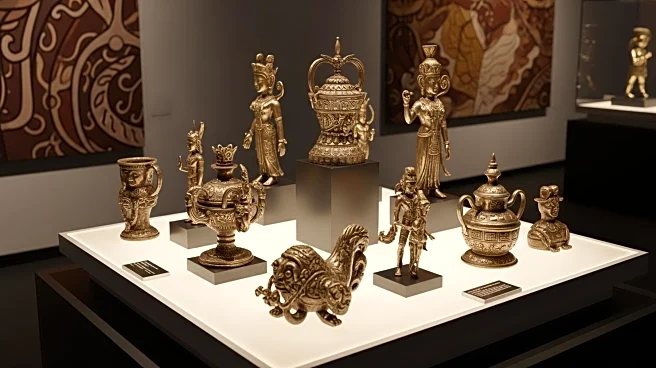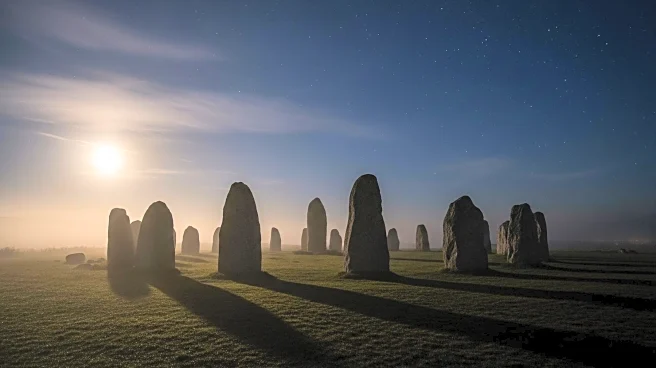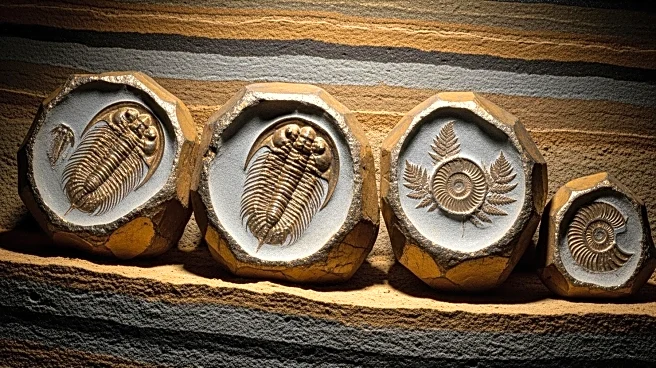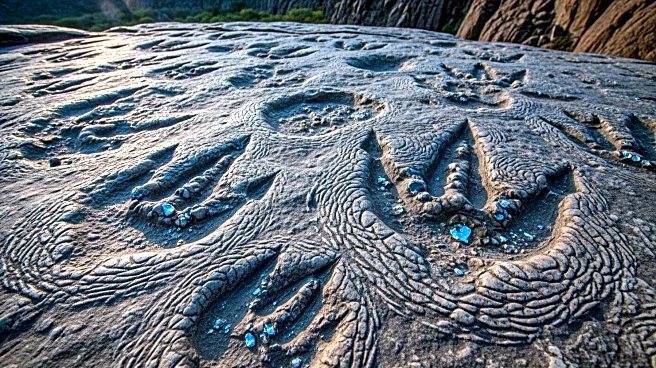What's Happening?
Recent research has revealed that the Altar Stone at Stonehenge, previously believed to originate from Wales, actually comes from the Orcadian Basin in Scotland. This discovery was made by a team from Curtin University, who analyzed the chemical composition of mineral grains within the stone. The findings suggest that the stone was transported over 466 miles to its current location, raising questions about the trade networks and societal organization during the Neolithic era. The study, published in Nature, challenges the long-standing belief that the stone was sourced from the Brecon Beacons area of southeast Wales.
Why It's Important?
The identification of the Altar Stone's Scottish origin highlights the complexity and sophistication of Neolithic societies in Britain. The transportation of such a massive stone over long distances implies advanced logistical capabilities and possibly marine shipping routes. This discovery could reshape our understanding of prehistoric trade networks and societal structures, suggesting a higher level of organization than previously thought. It also opens new avenues for archaeological research into the origins and construction of Stonehenge, a site of significant historical and cultural importance.
What's Next?
Researchers will continue to investigate the exact point of origin of the Altar Stone in Scotland, which could provide further insights into the trade and transport methods of Neolithic societies. This may involve more detailed geological surveys and analyses to pinpoint the specific quarry or location from which the stone was sourced. Additionally, the study may prompt a reevaluation of other stones at Stonehenge, potentially leading to new discoveries about their origins and the people who transported them.
Beyond the Headlines
The discovery raises broader questions about the cultural and societal dynamics of Neolithic Britain. It suggests that communities were interconnected over vast distances, possibly through trade or shared cultural practices. This interconnectedness could have implications for understanding the spread of ideas, technologies, and cultural practices during this period. The study also highlights the importance of interdisciplinary research in archaeology, combining geological, chemical, and historical analyses to uncover new insights into ancient societies.











